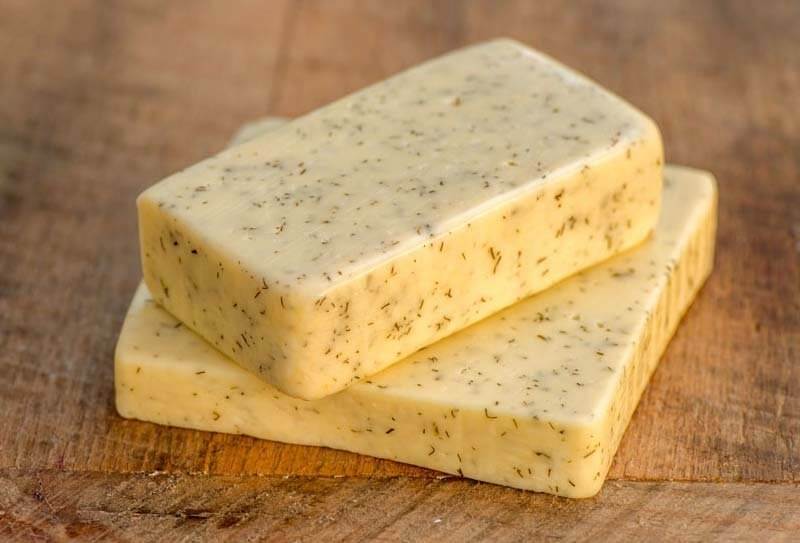
Havarti Cheese Making Recipe
-
Yield
4 Pounds
-
Aging Time
~3 Months
-
Skill Level
Intermediate
-
Author
Jim Wallace

Ingredients
Total price for selected items: Total price:
Black Friday Sale! Up to 20% Off Sitewide

Instructions
-

Heat & Acidify Milk
Heat four gallons of milk to 86F in a water bath, or stovetop. Add 1packs C101 culture and let the milk ripen for 45 minutes.
-


Coagulate with Rennet
Add 2.8 ml single strength liquid rennet diluted in 1/4 cup cool water, stir in gently for 1 minute. Let rest undisturbed for about a 36 minutes.
-




Cut Curds to Release Whey
Check for curd a proper firmness. To do this, insert a knife with the blade sideways and gently pull upwards, if the curd splits it's ready to be cut.
Once the curds is ready, cut it into 3/8" cubes. Do this by making a checkerboard patter with a curd knife, then insert a ladle, or very loose wisk, to make horizontal cuts.
After cutting, let the curds rest for 3-5 minutes.
-



Cook & Scald Curds
Gently Stir the curds for 15 minutes
After initial stir, remove 1/3 of the whey from the pot then stir for another 15 minutes
Next, add 15-25% (total milk volume) of hot water at 130¡F over 10 min.
The temperature of the curds should reach 95-100¡F, depending on the final moisture content desired.
Add 1 oz of salt and stir curd for another 15-30 minutes.
-


Drain Curd & Add Herbs
Drain the curds by transfering them into a large colander lined with buttermuslin.
Once drained, add herbs to the curd and mix well, be sure to keep the curds broken up while mixing.
-




Form & Press Curds
Transfer drained curds into a cloth lined cheese mold and add 8 lbs of weight for 15-20 minutes. Turn the cheese and rewrap it. Then, increase the weight to 16 lbs for the next 2 hours. Turn and rewrap the cheese every 30 minutes.
-


Soak Pressed Cheese
After pressing, the cheese cloth can be removed. Place the cheese back into the cheese mold and submerge it in a pot or bowl of 65¡F water overnight.
Before the overnight soak the pH should be 6.0-5.8, after the soak, the final pH sould be 5.2.
-

Salting
You will need a saturated brine prepared for salting this cheese, find all of the details you need on brining here.
A simple brine formula is:
- 1 gallon of water
- 2.25 lbs of salt
- 1 Tbs calcium chloride
- 1 tsp white vinegar
- Bring the brine and cheese to 50-55¡F before using.
Unmolded the cheese and tranfer it into to a saturated brine for 5-6 hours. Sprinkle the top surface with salt and flip the cheese half way through to brine evenly.
After brining, place the cheese on a draining mat and allow the surface to dry for 1-3 days.
-

Aging
The cheese is now ready to age. While aging, turn the cheese daily and wipe down with a light brine (1 tsp salt in a quart of water) every 2-3 days.
Keep temperature 59¡F with a relitave humidity of 90% for 5 weeks (young cheese) or 10-14 weeks (mature cheese).
After the initial aging, bring the temperature down to 54¡F with a relitave humidity of 80% for one week.
Get up to 20% Off Sitewide
Early Access Black Friday
You May Also Like

































